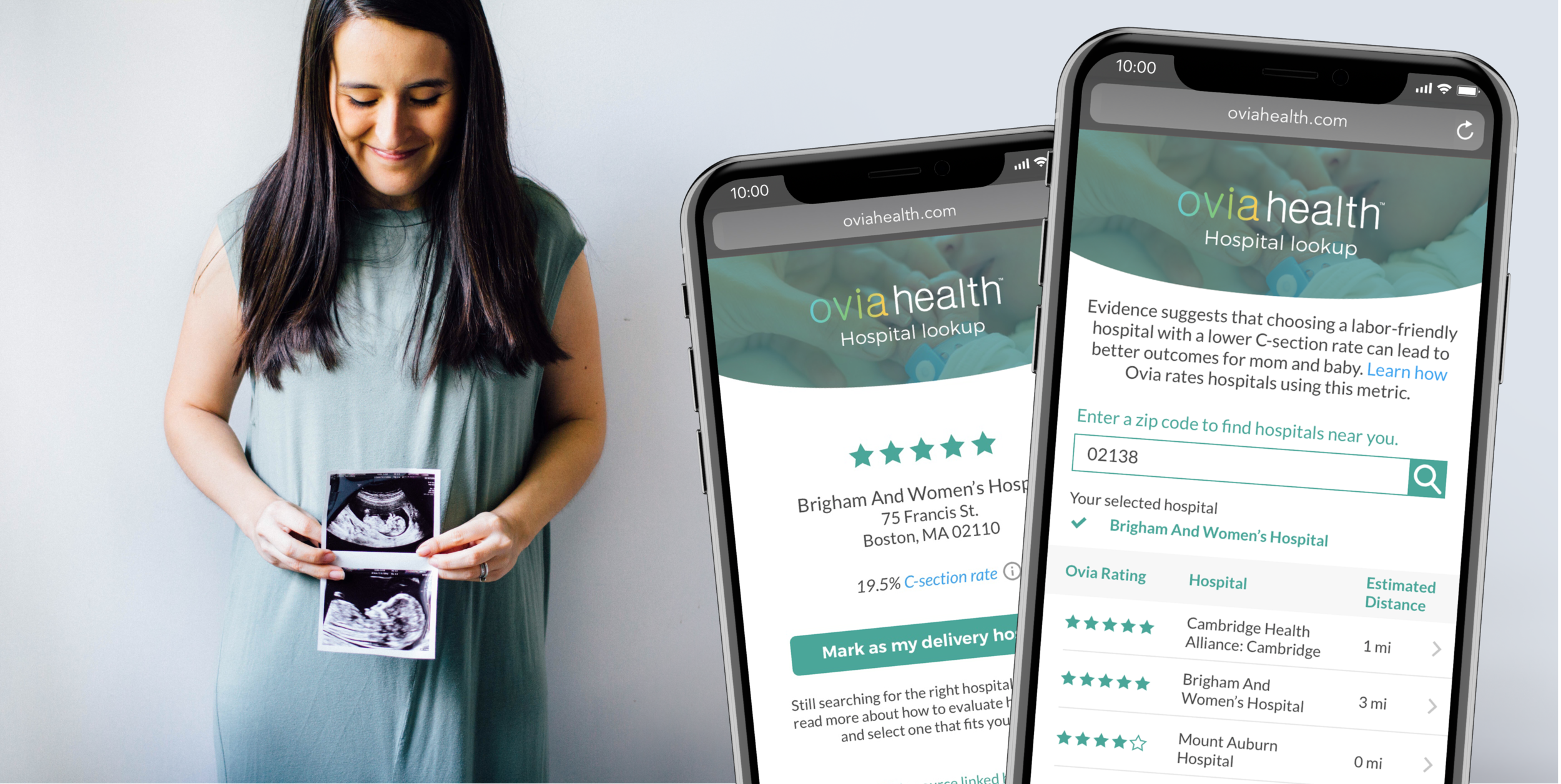C-section lookup tool
mobile optimized web tool - 2019
Project description
In conjunction with a Harvard team, Ovia created a web tool that would allow users to search for hospitals in their area based on C-section rate. The tool would be connected with a library of articles explaining the importance of this metric in terms of health for both mother and baby. The hypothesis is that by providing this information to users, we can positively influence their hospital choice and therefore improve clinical outcomes.
Sample of internal recruitment ad
Research strategy (see flow chart)
Users are recruited into study through an internal timeline ad asking for volunteers in both fertility and pregnancy app
Users who are interested will follow the prompt that will take them to an intake survey
Users who pass enrollment criteria will be randomly sorted into either the control or intervention group
Control group
Users in this group will access a more simplistic version of the tool (no rating system, only ability to lookup by location)
Intervention group
Users in this group will access a version of the tool with all the bells and whistles (rating system, background info on Ovia’s sorting method, background info on C-sections)
Goal
Prove our hypothesis that users that are exposed to more information about selecting a hospital will select one with a lower C-section rate over users who did not have that information. By proving this we can show Ovia’s ability to impact clinical outcomes.
The design challenge: star rating or ranking system?
When beginning to design the C-section tool, I was unsure what would be the most effective way to rank/rate the hospitals. Our data sources gave us each hospital’s average percentage of C-sections performed, but when comparing rates nationally there is a huge amount of variation. We discussed the pros and cons of using a star rating versus ranking system and then conducted users interviews with two different prototypes.
STAR-RATING SYSTEM
RANKING SYSTEM
Initial assumptions
A ranking system will be preferable for this dataset because it compares C-section rates against others in the area, as opposed to assigning a relative star-rating value
Ranking will be more straight forward
Users will feel guilt if they don’t choose the number 1 hospital on the list, when practically they may choose another based on location
Even if the actual percentage is very small between the ranked hospitals, the ranking system may over-inflate the difference
Ranking system may not feel as familiar to users
A rating system will be adjusted relative to the population in question - so if you live in an area with many hospitals with high rates of C-sections, your 5 star options could actually still be quite poor against the national benchmark - however this will not be obvious to the user
Rating system will make users feel like they have more options and that there isn’t just one right choice
User testing insights
After creating two prototypes with our ranking and rating versions, we interviewed about a dozen Ovia users over the phone and led them through both experiences. We found that overall women with prior exposure to health an academic fields preferred the raking system. We believe this is because it’s used commonly in these fields and feels highly credible. We also found that women who were younger, less educated, and usually first time moms preferred the star rating system. They seemed to feel more comfortable with this format and found the information less intimidating. In the end we chose to pursue the star rating system to cater to the type of user that was more likely to interact with the tool.
Final designs
Study outcomes (month 1)
In the first month of the study we had enrolled over 8,000 women into the program, and have also seen almost a 10% increase in users logging their chosen delivery hospital. All results are being tracked on a regular basis, and we hope the positive trend continues.




